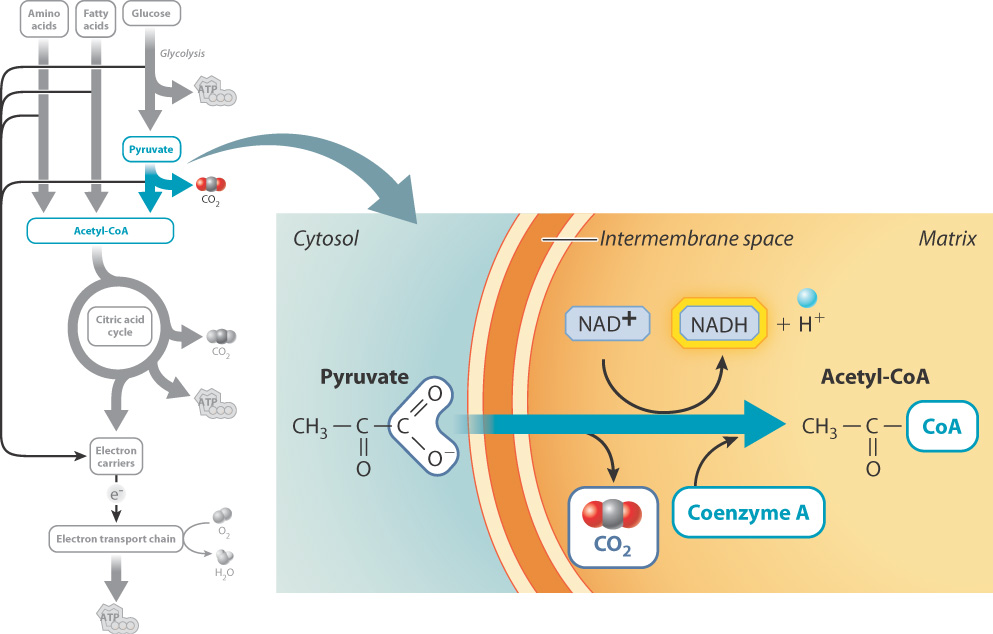7.3 ACETYL-CoA SYNTHESIS
Glycolysis occurs in almost all living organisms, but it does not generate very much energy in the form of ATP. The end product, pyruvate, still contains a good deal of chemical potential energy in its bonds. In the presence of oxygen, pyruvate can be further broken down to release more energy, first to acetyl-CoA and then even further in a series of reactions known as the citric acid cycle. The synthesis of acetyl-CoA is a key step that links glycolysis to the citric acid cycle. In eukaryotes, this is the first step that takes place inside the mitochondria.
7.3.1 The oxidation of pyruvate connects glycolysis to the citric acid cycle.

The end product of glycolysis is pyruvate, which can be transported into mitochondria. Mitochondria are rod-shaped organelles surrounded by a double membrane (Fig. 7.5; Chapter 5). The inner and outer mitochondrial membranes are not close to each other in all areas because the inner membrane has folds that project inward. These membranes define two spaces. The space between the inner and outer membranes is called the intermembrane space, and the space enclosed by the inner membrane is called the mitochondrial matrix.
7-8
Pyruvate is transported into the mitochondrial matrix, where it is converted into acetyl-CoA (Fig. 7.6). First, part of the pyruvate molecule is oxidized and splits off to form carbon dioxide, the most oxidized (and therefore the least energetic) form of carbon. The electrons lost in this process are donated to NAD+, which is reduced to NADH. The remaining part of the pyruvate molecule—an acetyl group (CH3OC—)—still contains a large amount of potential energy that can be harnessed. It is transferred to coenzyme A (CoA), a molecule that carries the acetyl group to the next set of reactions. All these reactions are catalyzed by a group of enzymes called the pyruvate dehydrogenase complex.

Overall, the synthesis of one molecule of acetyl-CoA from pyruvate results in the formation of one molecule of carbon dioxide and one molecule of NADH. Recall, however, that a single molecule of glucose forms two molecules of pyruvate during glycolysis. Therefore, two molecules of carbon dioxide, two molecules of NADH, and two molecules of acetyl-CoA are produced from a single starting glucose molecule in this stage of cellular respiration (Table 7.1). Acetyl-CoA is the substrate of the first step in the citric acid cycle.